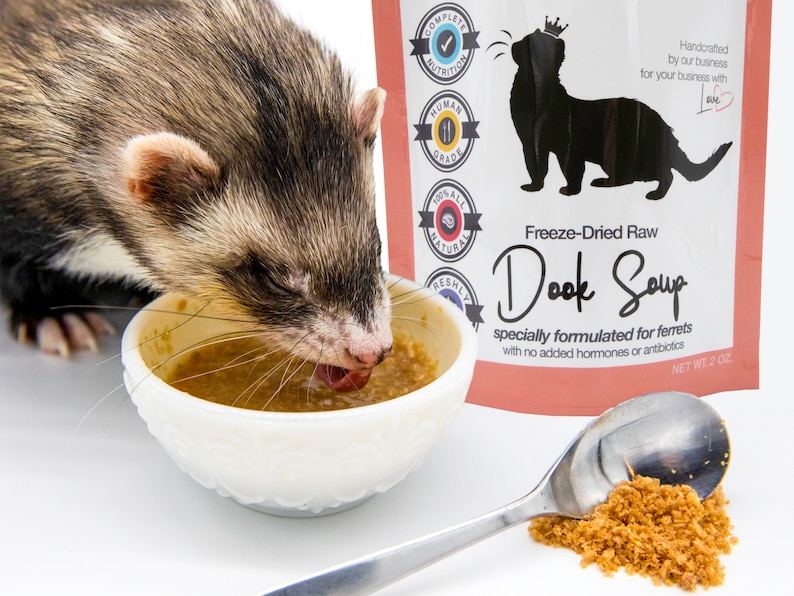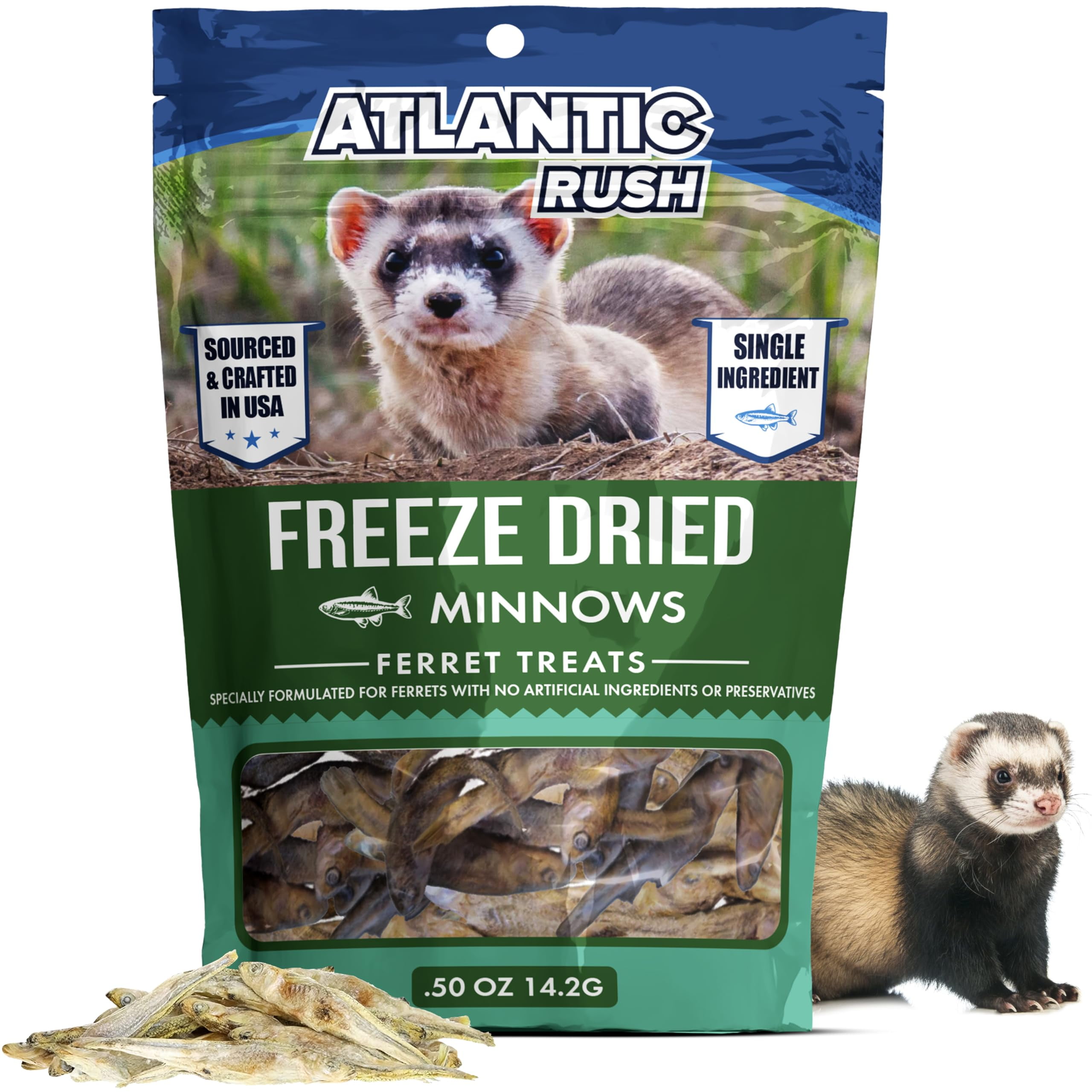
Freeze-Dried Meals for Ferrets: A Comprehensive Guide
Ferrets, with their playful antics and curious nature, make wonderful companions. As responsible ferret owners, providing them with a balanced and nutritious diet is crucial for their overall health and well-being. Freeze-dried meals have emerged as a popular option, offering a convenient and wholesome way to nourish these obligate carnivores. In this comprehensive guide, we will delve into the world of freeze-dried meals for ferrets, exploring their benefits, nutritional considerations, feeding guidelines, and potential drawbacks.
Understanding Freeze-Drying: A Preservation Technique
Freeze-drying, also known as lyophilization, is a dehydration process that removes moisture from perishable materials while preserving their nutritional value, flavor, and texture. The process involves freezing the food and then reducing the surrounding pressure to allow the frozen water to sublimate directly from the solid phase to the gas phase, bypassing the liquid phase. This method effectively removes moisture, inhibiting the growth of bacteria and enzymes that cause spoilage.
Benefits of Freeze-Dried Meals for Ferrets
Freeze-dried meals offer several advantages for ferret owners:
- Nutritional Value: Freeze-drying preserves the natural nutrients in the ingredients, including proteins, vitamins, and minerals. This ensures that your ferret receives a wholesome and balanced diet.
- Convenience: Freeze-dried meals are lightweight, shelf-stable, and easy to store. They require no refrigeration, making them ideal for travel or situations where access to fresh food is limited.
- Palatability: Freeze-dried meals retain the natural flavors and aromas of the ingredients, making them highly palatable to ferrets. This can be particularly beneficial for picky eaters.
- Digestibility: Freeze-dried meals are easily digestible, as the process breaks down complex proteins and carbohydrates. This can reduce the risk of digestive upset.
- Hygiene: Freeze-dried meals are processed under strict hygienic conditions, minimizing the risk of bacterial contamination. This can help prevent foodborne illnesses in ferrets.
- Variety: Freeze-dried meals come in a variety of flavors and formulations, allowing you to provide your ferret with a diverse and stimulating diet.
Nutritional Considerations for Freeze-Dried Meals
When selecting freeze-dried meals for your ferret, it’s essential to consider their specific nutritional requirements. Ferrets are obligate carnivores, meaning that their diet should primarily consist of animal-based proteins. A high-quality freeze-dried meal should contain at least 30-40% protein, 18-30% fat, and low fiber content.
- Protein: Protein is essential for muscle development, tissue repair, and overall growth. Look for freeze-dried meals that contain high-quality animal-based protein sources, such as chicken, turkey, or lamb.
- Fat: Fat provides energy and supports the absorption of fat-soluble vitamins. Choose freeze-dried meals that contain healthy fats, such as omega-3 and omega-6 fatty acids.
- Fiber: Ferrets have a limited ability to digest fiber. Therefore, freeze-dried meals should have low fiber content. Excessive fiber can interfere with nutrient absorption and cause digestive upset.
- Taurine: Taurine is an essential amino acid for ferrets, crucial for heart health, vision, and reproductive function. Ensure that the freeze-dried meal contains adequate taurine supplementation.
- Vitamins and Minerals: Freeze-dried meals should be fortified with essential vitamins and minerals, such as vitamin A, vitamin D, vitamin E, and calcium. These nutrients play vital roles in maintaining overall health and preventing deficiencies.
Feeding Guidelines for Freeze-Dried Meals
When introducing freeze-dried meals to your ferret, it’s essential to follow these guidelines:
- Transition Gradually: Gradually transition your ferret to freeze-dried meals over a period of 7-10 days. Start by mixing a small amount of freeze-dried meal with their existing food, gradually increasing the proportion of freeze-dried meal over time.
- Hydration: Freeze-dried meals are dehydrated, so it’s crucial to provide your ferret with plenty of fresh water. You can also rehydrate the freeze-dried meal by adding water or broth before feeding.
- Portion Control: Feed your ferret the appropriate amount of freeze-dried meal based on their age, activity level, and weight. Consult with your veterinarian to determine the optimal feeding schedule and portion sizes.
- Supplementation: While freeze-dried meals are generally nutritionally complete, you may consider supplementing with additional vitamins and minerals, particularly if your ferret has specific health concerns.
- Storage: Store freeze-dried meals in a cool, dry place away from direct sunlight. Once opened, reseal the packaging tightly to prevent moisture absorption and maintain freshness.
Potential Drawbacks of Freeze-Dried Meals
While freeze-dried meals offer numerous benefits, there are also some potential drawbacks to consider:
- Cost: Freeze-dried meals can be more expensive than traditional ferret foods.
- Availability: Freeze-dried meals may not be readily available in all pet stores or online retailers.
- Processing: Freeze-drying is a complex process that can potentially alter the nutritional composition of the ingredients.
- Dental Health: Freeze-dried meals may not provide the same dental benefits as kibble, which can help remove plaque and tartar buildup.
Choosing the Right Freeze-Dried Meal
With a wide variety of freeze-dried meals available on the market, selecting the right one for your ferret can be challenging. Consider the following factors:
- Ingredients: Choose freeze-dried meals that contain high-quality, animal-based protein sources as the primary ingredients.
- Nutritional Analysis: Carefully review the nutritional analysis to ensure that the freeze-dried meal meets your ferret’s specific nutritional requirements.
- Brand Reputation: Select freeze-dried meals from reputable brands with a proven track record of producing high-quality pet foods.
- Customer Reviews: Read customer reviews to get insights into the palatability and effectiveness of different freeze-dried meals.
- Veterinarian Recommendation: Consult with your veterinarian to get personalized recommendations based on your ferret’s individual needs.
Conclusion
Freeze-dried meals can be a convenient and nutritious option for feeding ferrets. They offer numerous benefits, including high nutritional value, convenience, palatability, and digestibility. However, it’s essential to choose high-quality freeze-dried meals that meet your ferret’s specific nutritional requirements and to follow proper feeding guidelines. By carefully considering the benefits, drawbacks, and selection criteria, you can make an informed decision about whether freeze-dried meals are the right choice for your furry companion. Always consult with your veterinarian to determine the best diet for your ferret’s individual needs.

